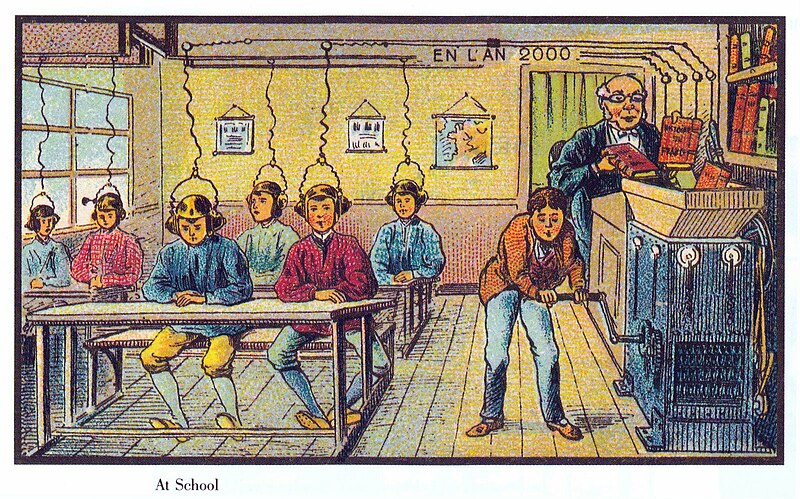 Recently Jeff Howard tweeted a link to Sophia Mavridi's wonderful article "We need pedagogy, not just cool tools." which reminded me how easy it is to get so enamored with some new tech toy that I forget about the reasons why am using it. Every piece of physical technology or digital tool that comes into my class has to fit into the intricate puzzle that is an 8th grade inquiry based social science class. Strangely, when learners are working well within the system that they and I have hammered out they know how to reshape the pieces just enough to make just about anything fit.
Recently Jeff Howard tweeted a link to Sophia Mavridi's wonderful article "We need pedagogy, not just cool tools." which reminded me how easy it is to get so enamored with some new tech toy that I forget about the reasons why am using it. Every piece of physical technology or digital tool that comes into my class has to fit into the intricate puzzle that is an 8th grade inquiry based social science class. Strangely, when learners are working well within the system that they and I have hammered out they know how to reshape the pieces just enough to make just about anything fit.Take into account the number of new tools developed each month and attempting to learn them all as a class would be impossible. The more tools that are presented to learners the fewer they master as a group, however that can lead to a diverse cohort of cooperative skills that create a system of collaboration and team work that is more akin to many modern business models. Wait, stop. That might actually be a good thing. Digital tools come, get altered, stale like bread, become redundant, go out of fashion, get bought by that company I hate, raise their prices, and or disappear all together, sometimes in the course of a year.
An artist must have his measuring tools not in the hand, but in the eye. (Michelangelo)
These issues have created two models for technology integration in the Authentic Classroom which are often put to work simultaneously. The Design First method asks learners to research, think, ideate, and create through a modeling process before that get any where near the computer. Ideas are drawn shared discussed and edited on paper or dry erase surfaces well before learners sit down at a computer to build there digital version. Setting down with the model in hand makes digital work much more efficient. The Tech Spec (technology specialty) method asks each learner to develop a finite tool kit of simple, yet creative, research input and product output tools that help them learn and demonstrate that learning. All of our learners have Google Drive accounts which provide them with basic word process, database and presentation capabilities. In addition to the basic tools each learner is encouraged to develop skill in others that best fit the project or product that he or she is making. When a learner expresses interest in a new tool he or she is asked to experiment with it and to find tutorials and examples from others to ensure that is will meet their needs. Then the learner must produce two or more projects with the tool before they can add another.
Digital tools are treated like any other tools that a creative person uses. The process is similar to the maker movement in engineering and electronics. It is that type of Making that we are working towards. Silvia Martinez and Gary Stager have created a fantastic look into modern engineering based Making in the classroom, but even that very science centered format transforms easily over to social science when learners are actively investigation history, anthropology, physiology and economics in order to build cultural and social reconstructions from historic evidence. Using technology to develop the research and to analyse information creates time for deeper though construction, Adding the technology to the end production enables them to "make" there Ideas visible to the world.
Ultimately, the real test of any technological tool rests in four questions. Does it enable better research and thinking? Does it enable my design idea to become real? Is it usable, reliable, and if possible free? Can I share it with others for collaboration and presentation?
